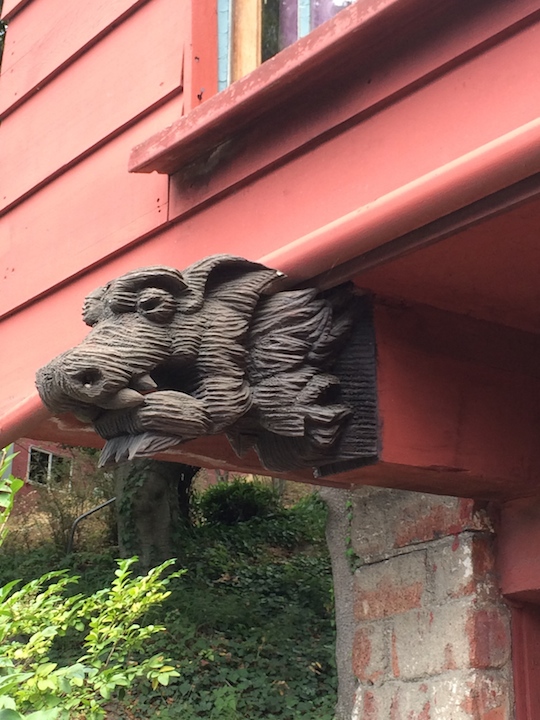1Being of a certain age, there is only one possible song for me to use as my dragon theme song. Puff. More on Puff here. If you care. Actually, it is there if you care or not. You click if you care and you go there.
And without further ado, the dragons of Berkeley. For me, there is a two-way tie for best dragon. What do you think?
Those are great, aren’t they? The others aren’t shabby at all either.
This one is, of course, the Oroboros, an ancient image of dragon or snake eating its own tail. It symbolizes self-flexivity and cyclicality. It is found in the art of ancient Egypt and Greece, and is often seen in works of Gnosticism and Hermeticism.
I pass it often. Who knew?
Elizabeth White wrote me about this photo of the beast named Griselda on Channing. She firmly but kindly corrected me. This is a griffon, not a dragon. Lion body, eagle head and wings. She knows this because it was the symbol of her class at Mount Holyoke.
She adds: “I probably wouldn’t have recognized a basilisk or manticore.” I wouldn’t either.
I stand corrected. But will still keep the photo here because I don’t have a better place for it. I thank her.
When I showed the photos to my friend, he launched into a lecture about maps of the Middle Ages and how cartographers labeled unknown seas and lands with “Here There Be Dragons” – the 15th century version of Ptolemy’s Atlas, the medieval copy of Tabula Peutingeriana, the Psalter map (1250 A.D.), the Ebstorf map (13th century), the Borgia Map (1430 A.D.), Giovanni Leardo’s Map (1442), Waldseemüller’s Carta marina navigatoria (1516), and Bishop Olaus Magnus’s ‘Carta Marina’ map of Scandinavia (1539). He had his slide projector set up in an instant and showed me slides:
It had been a while since I had seen an honest-to-God old-fashioned slide show. Our neighbors Mr. and Mrs. Schick invited the neighborhood kids to their home a few times for slide shows, cookies, and ice cream. Circa 1961. Pretty cool!
But, though – did he have an opinion about the dragons of Berkeley? Yes, indeed, he did:




























